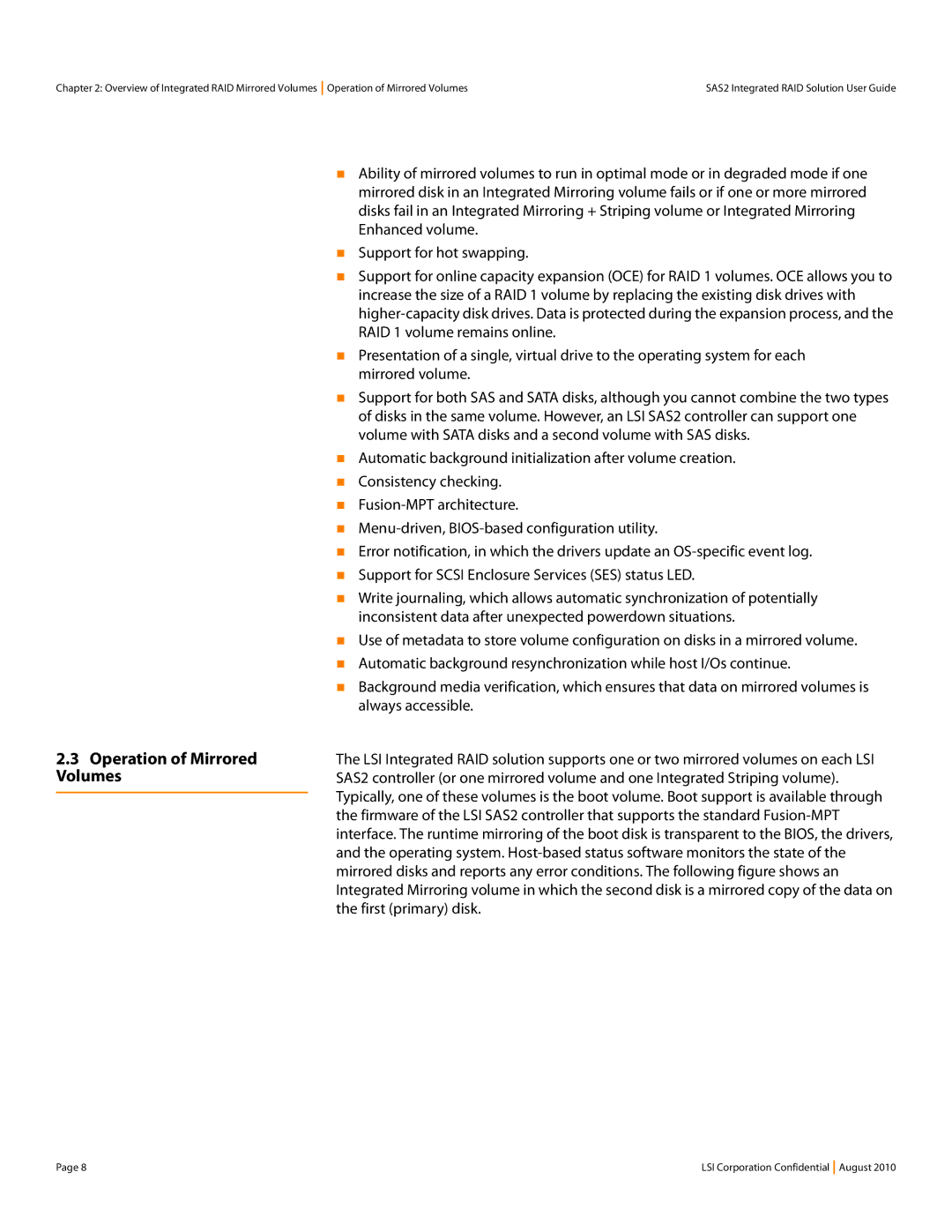Chapter 2: Overview of Integrated RAID Mirrored Volumes Operation of Mirrored Volumes | SAS2 Integrated RAID Solution User Guide |
2.3Operation of Mirrored Volumes
Ability of mirrored volumes to run in optimal mode or in degraded mode if one mirrored disk in an Integrated Mirroring volume fails or if one or more mirrored disks fail in an Integrated Mirroring + Striping volume or Integrated Mirroring Enhanced volume.
Support for hot swapping.
Support for online capacity expansion (OCE) for RAID 1 volumes. OCE allows you to increase the size of a RAID 1 volume by replacing the existing disk drives with
Presentation of a single, virtual drive to the operating system for each mirrored volume.
Support for both SAS and SATA disks, although you cannot combine the two types of disks in the same volume. However, an LSI SAS2 controller can support one volume with SATA disks and a second volume with SAS disks.
Automatic background initialization after volume creation.
Consistency checking.
Error notification, in which the drivers update an
Support for SCSI Enclosure Services (SES) status LED.
Write journaling, which allows automatic synchronization of potentially inconsistent data after unexpected powerdown situations.
Use of metadata to store volume configuration on disks in a mirrored volume.
Automatic background resynchronization while host I/Os continue.
Background media verification, which ensures that data on mirrored volumes is always accessible.
The LSI Integrated RAID solution supports one or two mirrored volumes on each LSI SAS2 controller (or one mirrored volume and one Integrated Striping volume). Typically, one of these volumes is the boot volume. Boot support is available through the firmware of the LSI SAS2 controller that supports the standard
Page 8 | LSI Corporation Confidential August 2010 |
